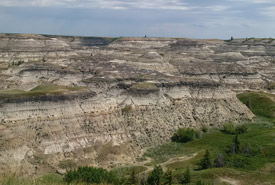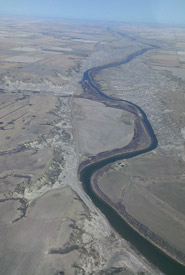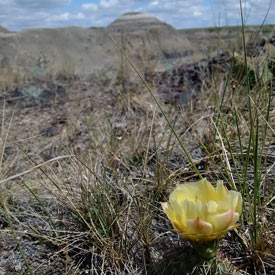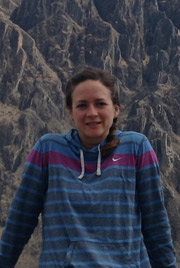Badlands in Canada

Horseshoe Canyon (Photo by NCC)
As a child, almost all of my family holidays were spent packing up the camper and heading west from Edmonton to go camping in the mountains. As a result, I viewed Alberta predominantly as a province of trees, mountains, lakes and foothills. This was all I knew and I guess I felt content, but really I was unknowingly missing out on what else Alberta had to offer.
Just east of Red Deer, for roughly 300 kilometres along the Red Deer River to the Saskatchewan border, you will find a truly unique landscape unlike anything else in Alberta. I still remember the first time I visited Dinosaur Provincial Park near Drumheller, how stunned I was by the stark contrast between the flat, upper grasslands and the exposed layers of sedimentary rock along the valley slopes.
During the quick descent into the river valley, I felt like I had somehow been transported out of Alberta. However, it might be more accurate to say it felt like I had been transported back in time. While I would not consider myself a dinosaur enthusiast, I had heard that the badlands are the place to be if you are looking for remnant pieces of these mighty giants that once walked the Earth. In fact, the badlands are often described as a fossil hotbed, and the town of Drumheller is known as the dinosaur capital of the World.

Badlands along Red Deer River, AB. (Photo by Alia Snively/ NCC staff)
Whether you are into dinosaurs or not, it is hard to not be amazed by the scenery of the badlands. The hoodoos seem otherworldly and the coulee slopes are streaked with colourful layers made of sand, silt and clay that was deposited as far back as 75 million years ago. The composition of the different layers is a result of a continually changing environment and includes sea floor sediments, volcanic ash and sandstone.
This geological history has become visible as a result of erosion from glacial meltwater cutting through the rock layers. The continual erosion of this landscape means that it is constantly changing but also means that one day this landscape will be gone. It has been estimated that erosion occurs at a rate of one inch per year, so eventually the badlands will completely erode away. Until then, this mysterious landscape will remain a hidden treasure in the grasslands of southeastern Alberta.
Life in the badlands
French settlers were among the first to come across the badlands, and it has been said that the name "badlands" originated because they thought the landscape was unproductive, hard to traverse and inhospitable. In some ways they were right! The constant erosion, which has shaped this unique area, also makes it hard for vegetation to become established. This, combined with the limited moisture and high temperatures, makes for unfavourable growing conditions, yet many plants and animals have adapted to this and are able to thrive.
Life in the badlands is supported by rivers and riverbank areas, which add a splash of colour as they wind their way through the valleys. These areas provide food and water for many species, such as deer, cottontail rabbits, coyotes and numerous bird species, including the mountain bluebird.

Flowering prickly pear cactus (Photo by Alia Snively/ NCC staff)
Other species, such as the plains prickly pear cactus and the pincushion cactus, can be found growing near the more arid and exposed coulee slopes. The variety of life within the badlands is quite astounding and it adds to the truly diverse and unique landscapes that make up Alberta.
Now, when I think about Alberta, I think of how incredible it is that there are forests, mountains, hills, lakes, rivers, grasslands…and badlands!


